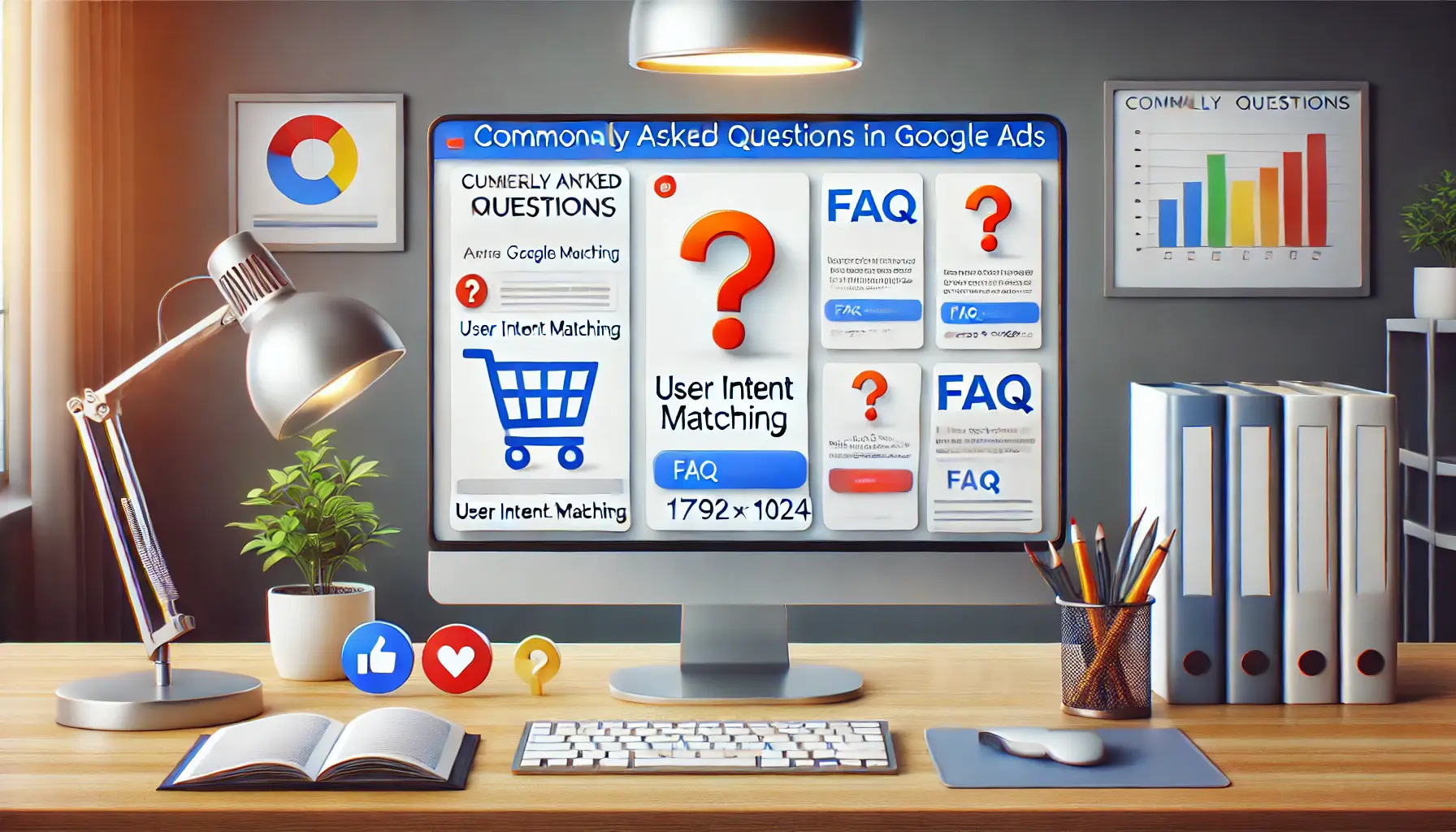Targeting the right audience at the right moment is everything when it comes to a digital marketer.
What this means with Google Ads is that an advertiser can craft messages that match active searches of users.
There’s a bit of an art to it, beyond just simply choosing keywords.
This is where User Intent Matching comes into play.
By aligning your ads to the specific intent behind a user’s search, you will dramatically improve ad relevance, click-through rates, and, ultimately, conversion rates.
But what does user intent really mean, and how are you going to leverage it to your advantage in Google Ads?
More specifically, in this article, User Intent Matching is reviewed in depth by providing practical means of how to match user search intent and get better results with your campaigns.
We’re now going to show you the different kinds of user intent, how to use Google Ads tools to leverage that, and some proven best practices to take your ad performance to the next level.
Let’s get started!
- Understanding User Intent in Google Ads
- How to Effectively Match User Intent
- Intent Matching Using Google Ads: How It Adds Up in Value for a Stronger User Intent Matching Strategy
- Measuring and Analyzing Success of User Intent Matching
- Best Ways to Improve User Intent Matching
- Conclusions on How to Master User Intent Matching in Google Ads
- Commonly Asked Questions About User Intent Matching in Google Ads
Understanding User Intent in Google Ads
When users go to Google, they are not merely typing in words but expressing a need or a question, even intent.
In other words, understanding the intent of the user means getting at what they really want and using that insight to create ads resonating.
At its very core, user intent in Google Ads is the motivation behind a search.
By identifying and catering to such intent, you show your audience something way more relevant to their needs; that naturally gets them more interested in your ad.
The various types of user intent can be summed up into a few key categorizations, each with distinctive characteristics and implications for ad targeting.
Instead of just focusing on what words were typed in the search bar, it’s about the intent of what the searcher is trying to accomplish.
Capturing that intent is critical for advertisers because if you can ensure your ad is going to be relevant and useful to that person, Google will reward you by putting better ad placements at a lower cost-per-click.
The better you match your ads to user intent, the better the user experience will be, your campaigns will have better relevance, and overall, much better results.
That means effective intent matching ensures that potential customers see your ad when they are more likely to take action, whether that be purchasing something, signing up for a newsletter, or seeking more information.

Visual representation of different user intent types in digital marketing.
Types of User Intent: Navigational, Informational, Transactional
To be able to work with the user’s intent effectively, it is crucial to understand the main types of user intent.
- Navigational Intent: The user is looking for a certain website or brand. For instance, someone searching for “YouTube” or “Nike shoes” is likely trying to go directly to that brand’s website.
- Informational Intent: The user seeks knowledge or answers to questions. Queries like “how to cook pasta” or “benefits of yoga” indicate informational intent.
- Transactional Intent: The user is ready to take action, often with a purchase in mind. Searches like “buy wireless headphones” or “best deals on laptops” signal transactional intent.
Recognizing these categories helps you design ads to match each intent type.
For instance, informational intent can be better served by an educational blog post, while transactional intent will do better on product pages or special offers.

Illustration of ad relevance improvement through user intent matching in digital marketing.
Why User Intent Matching Improves Ad Relevance
The point is, user intent matching isn’t just some hot buzzword in marketing but brings very real and measurable benefits.
In fact, ads matching search intent will obviously have a better chance of grabbing users’ attention, improving click-through rates, and conversions.
Since relevance is key in Google’s approach to ads, most campaigns that focus on user intent generally perform better and have high quality scores.
In that view, focusing on user intent can help you narrow your targeting even more and make sure that you are in front of the right people at the right time.
This strategic approach helps minimize wasted ad spend and boosts return on investment.

Visual representation of keywords aiding in identifying user intent in digital marketing.
The Role of Keywords in Understanding Intent
Keywords play a critical role in capturing user intent.
Each keyword or phrase provides insight into what the user is looking for, helping you determine the most appropriate response.
That’s not all, though—it’s not just about keyword matching.
The work lies in the selection of words that will answer the intent of the user.
For example, keywords like “how to” or “benefits of” are usually indicative of informational intent, while the use of “buy” or “discount” leads to transactional intent.
Being able to understand these models will help you build campaigns that pop for your user type and fulfill their needs.
Matching user intent allows advertisers to reach audiences with relevant ads, improving click-through and conversion rates.

Illustration of effective methods for matching user intent in digital marketing.
How to Effectively Match User Intent
Compared to other strategies, mastering how to match user intent is the key to maximizing relevance and the impact of your Google Ads campaigns.
If you know the intent behind a particular search, you can tailor an approach to reach users in a much more meaningful way.
By using a strategic mixture of keyword selection, ad copy optimization, negative keywordsKeywords used to prevent ads from showing for certain search terms., and landing page alignment, you can ensure that your ads resonate with the right audience and meet their expectations.

Depiction of keyword selection strategies for various user intent types in digital marketing.
Keyword Selection for Different Intent Types
Knowing which keywords signal informational, navigational, or transactional intent will help you build campaigns that serve the user throughout their journey.
For example:
- Informational Keywords: These keywords indicate research or knowledge-gathering intentions, such as “how to,” “benefits of,” and “guide to.” These phrases show that the user is researching and might be interested in informative content or blog posts.
- Navigational Keywords: Examples of these keywords include “brand name” or “product name,” indicating that users intend to find a particular brand or website. If you’re a brand, using navigational keywords ensures that users searching directly for your brand can find you in the search results.
- Transactional Keywords: Words and phrases like “buy,” “best deals,” or “discount” point to readiness to make a purchase. Ads with strong calls to action and promotional messages work best with these keywords.

Illustration of ad copy optimization to align with user intent in digital marketing.
Optimizing Ad Copy to Match User Intent
Once you have selected intent-based keywords, it’s important to craft ad copy that aligns with the intent behind those searches.
This means writing ad text that addresses the user’s specific needs and motivations.
For instance, users with transactional intent may respond best to ads featuring phrases like “limited time offer” or “shop now.” On the other hand, users seeking information will be drawn to ads promising answers or in-depth knowledge.
By personalizing ad copy to match various types of user intent, you create a more attractive and convincing ad experience.
Test different messaging, calls to action, and language to ensure your ads speak to each user’s intent.

Illustration of using negative keywords to filter out irrelevant searches in digital marketing.
Using Negative Keywords to Avoid Mismatched Searches
Adding negative keywords is one of the most important ways to keep your ads from displaying for irrelevant searches.
Negative keywords help you exclude searches that aren’t aligned with your goals, ensuring that your ads appear only for the most relevant audiences.
For instance, if you’re running an e-commerce ad campaign for premium headphones, you might add negative keywords like “free” or “cheap” to exclude bargain hunters if they’re not your target market.
Regularly revisiting and expanding your negative keywords list helps refine your audience reach, minimizes ad spend wastage, and enhances the effectiveness of your user intent matching strategy.

Illustration of creating landing pages aligned with user intent in digital marketing.
Creating Landing Pages That Align with User Intent
Creating landing pages that align with user intent is essential for a smooth and cohesive user journey.
When users click on your ad, they expect to land on a page that meets their needs.
Mismatched landing pages lead to high bounce rates and low conversion rates.
A user searching for a “how-to” guide should land on an informational page, not a product page.
Similarly, a user intending to make a purchase should be directed to a page with clear buying options and calls to action.
By building specific landing pages targeted to the exact intent of the user, you create a consistent experience that increases the likelihood of conversion.
Aligning every part of your ad—from the keyword to the landing page—ensures a user journey that is smooth and satisfying.
Strategies such as keyword selection, ad copy optimization, and aligning landing pages are key to effective user intent matching.

Illustration of intent matching in Google Ads for enhanced user intent strategy.
Intent Matching Using Google Ads: How It Adds Up in Value for a Stronger User Intent Matching Strategy
Leveraging Google Ads can amplify your user intent matching strategy in manifold ways to help you understand, analyze, and target user searches more efficiently.
Google Ads offers a variety of built-in tools to find intent-based keywords, refine targeting, and optimize ad performance.
This provides real relevance for your campaigns and ensures they are as effective as possible.
Here’s how you can make use of different tools to your advantage:

Illustration of using Google Keyword Planner for intent-focused keyword research in digital marketing.
Google Keyword Planner for Intent-Based Keyword Research
The Google Keyword PlannerA tool for researching keywords and assessing their search volume and competition. is a powerful tool for finding keywords that align with user intent.
You can use it to get keyword ideas by examining their search volume, competition, and predicted performance.
When using the Keyword Planner, consider filtering its results based on intent type to see which keywords best match informational, navigational, or transactional queries.
This helps you understand what terms people are looking for and allows you to frame your ads accordingly.
Using the Keyword Planner effectively enables you to refine a final list of keywords where each term reflects a specific intent.
This targeted approach enhances user intent matching by connecting your ads with the right audience at the right stage of their journey.

Illustration of using Google Analytics to gather intent insights in digital marketing.
Leveraging Google Analytics for Intent Insights
Google Analytics provides in-depth data on user behavior, offering valuable insights into intent.
By examining metrics such as page views, bounce rates, and session durations, you can understand what users are looking for when they visit your site.
For example, high bounce rates on certain pages might indicate a mismatch between the ad’s intent and the content of the landing page.
You can segment users with Analytics’ Audience and Behavior reports based on actions they take on your site, helping you adjust your ad strategy to better meet their needs.
This data-driven approach fine-tunes your user intent matching strategy, enhancing engagement and conversions.

Illustration of using Google Search Terms Report for refining ad targeting in digital marketing.
Implementing Google Search Terms Report for Refinement
The Google Search Terms Report is a key tool for refining user intent alignment.
This report shows the exact queries that triggered your ads, helping you assess whether your ads are matching the correct intent.
By analyzing the search terms, you can identify keywords that may need adjustment or add negative keywords to exclude mismatched searches.
Regularly reviewing the Search Terms Report enables you to fine-tune your targeting so that your ads only appear for relevant queries.
This optimizes your ad spend and makes your user intent matching strategy more effective.

Illustration of optimizing ad groups for enhanced intent matching in digital marketing.
Optimizing Ad Groups for Better Intent Matching
User intent can also be used to optimize your ad groups, allowing you to create more focused and relevant ads.
Grouping keywords and ads by intent gives you better control over how your ads appear for different types of searches.
For example, creating separate ad groups for informational, navigational, and transactional keywords enables you to build ad copy and landing pages tailored specifically for each intent type.
This organization allows you to convey the right messaging for each intent type, improving user experience and campaign performance.
Ad group optimization ensures that each ad aligns with a particular user need, enhancing the overall user intent matching approach.
Leveraging Google Ads tools like Keyword Planner and Analytics strengthens your ability to capture and align with user intent.

Illustration of measuring and analyzing the success of user intent matching in digital marketing.
Measuring and Analyzing Success of User Intent Matching
The key to understanding the impact of your user intent matching strategy on your Google Ads campaigns is measurement.
By analyzing important metrics, you can determine how well your ads are reaching the intended audience and if those ads are meeting their intent.
This data-driven approach allows you to continuously refine your strategy to ensure that your ads are as relevant and engaging as possible.

Illustration of key performance indicators for user intent alignment in digital marketing.
Key Performance Indicators for User Intent Alignment
To evaluate the effectiveness of user intent matching, start with several key performance indicators (KPIs).
These metrics offer insight into the relevance of your ad to user intent and may include the following:
- Click-Through Rate (CTR): A high CTR suggests that users find your ad relevant to their search intent. If your CTR is low, it may be necessary to adjust matched keywords or ad copy to better align with the audience’s intent.
- Conversion Rate: This metric shows the percentage of users who take a desired action after clicking an ad. High conversion rates indicate strong intent alignment, especially for transactional keywords.
- Bounce Rate: A high bounce rate often indicates poor alignment between user intent and the landing page. Reducing bounce rates usually results in a better user experience and improved conversions.
- Quality Score: Google’s Quality Score reflects ad relevance. A high Quality Score often leads to lower costs per click and improved ad placements.
By tracking these KPIs regularly, you can identify what works and what doesn’t in your user intent matching strategy, pinpointing areas for improvement.
A high CTR generally indicates that your ad is relevant to the user’s search intent, while a high conversion rateThe percentage of users who take a desired action, like making a purchase, after clicking an ad. shows that users were successfully motivated to convert through your ad.
If either of these metrics is underperforming, revisit keyword targeting, ad copy, and landing page alignment to ensure they accurately reflect user intent.
Experimenting with different messaging or calls to action can also help improve these rates.

Illustration of adjusting bids based on user intent data in digital marketing.
Adjusting Bids Based on User Intent Data
Adjusting bids based on user intent can enhance campaign efficiency and effectiveness.
For high-intent keywords, such as transactional searches, consider increasing your bid to capture valuable conversions.
Conversely, for informational keywords, you may want to lower bids to keep costs under control while still reaching users in the early stages of their journey.
This bid strategy helps prioritize high-intent searches that are more likely to drive conversions, allowing for better budget allocation.

Illustration of A/B testing to enhance intent matching in digital marketing.
Using A/B Testing to Improve Intent Matching
A/B testing is an effective way to fine-tune your strategy for user intent matching.
By testing different ad copies, headlines, and calls to action, you can determine which versions work best for different user intents.
For example, you can experiment with different offers or messaging to see which resonates better with transactional intent versus informational intent.
Regular A/B testing helps ensure that all key elements of your ads align with user intent, optimizing engagement and conversions over time.
Metrics like CTR, conversion rate, and bounce rateThe percentage of visitors who leave a website after viewing only one page. help assess how well ads align with user intent.

Illustration of strategies to enhance user intent matching in digital marketing.
Best Ways to Improve User Intent Matching
User intent matching is all about refinement and evolution.
To keep pace and ensure your Google Ads campaigns perform at their fullest potential, follow a series of best practices that enhance relevance and user experience.
These include continuous research, frequent ad copy updates, personalization, and testing new features.

Illustration of continuous research into keywords and audience in digital marketing.
Continuous Research into Keywords and Audience
The digital landscape and user behavior are always changing, so it’s essential to stay updated with ongoing research into keywords and audiences.
Regularly revisit your keyword list to identify emerging trends and shifts in search behavior.
Tools like Google Trends and Google Keyword Planner can help you discover new keywords that fit current user intent.
Segment your audience by behavior and interests, adjusting your targeting to better address their needs.
This approach ensures your campaigns remain relevant to evolving search patterns and user expectations.

Illustration of regularly updating ad copy to align with evolving user intent in digital marketing.
Regularly Updating Ad Copy to Match Evolving Intent
User intent can shift over time, so keeping your ad copy updated is crucial for maintaining relevance.
Test different variations of ad text to ensure your message resonates with each user intent type.
For instance, if informational searches are on the rise, consider emphasizing educational or informative aspects in your ad creative.
Frequent updates to ad copy not only improve user engagement but also signal to Google that your ad is fresh and relevant, which can positively impact your ad quality scoreA metric Google uses to measure the relevance and quality of ads, keywords, and landing pages..

Illustration of personalizing ads with dynamic content in digital marketing.
Personalizing Ads with Dynamic Content
Using dynamic contentContent that changes based on user data, such as location or search behavior. enables you to create ads tailored to specific user data, such as location, device, or specific search queries.
Google’s Dynamic Search AdsGoogle Ads that automatically create ad headlines based on website content. and Responsive Search AdsA Google Ads format that automatically adjusts ad content to improve relevance. automatically adjust elements of your ad to better align with individual user intent.
This personalized approach increases the likelihood that your ad will resonate with users, improving click-through and conversion rates.
Personalization also enhances the user experience by delivering content that feels more relevant and specific to their needs.

Illustration of testing new Google Ad features for improved matching in digital marketing.
Testing New Google Ad Features for Enhanced Matching
Google frequently introduces new ad features and tools designed to improve targeting and relevance.
Staying informed about these updates can help you leverage the latest tools for better user intent matching.
Features like Audience ExpansionA Google Ads feature that broadens ad targeting to reach similar audiences. and In-Market AudiencesAudiences in Google Ads identified as likely to purchase based on recent search behavior. allow for more precise targeting based on intent and behavior.
Testing these new features keeps you competitive, helping you adapt to evolving user preferences and increasing the accuracy of your targeting strategy.

Illustration of adapting user intent matching strategies for mobile users in digital marketing.
Adapting User Intent Matching Strategies for Mobile Users
With the rise in mobile searches, adapting your user intent matching strategies for mobile users is essential.
Mobile users often have immediate intent, such as finding nearby services or making quick purchases.
Ensure that your ads and landing pages are optimized for mobile, with clear and actionable messaging that meets the fast-paced needs of mobile users.
By accounting for mobile-specific user intent, you can create campaigns that resonate with on-the-go audiences, maximizing engagement and conversion opportunities.
Regularly updating keywords, ad copy, and using personalization through dynamic content are crucial practices for refining user intent matching.

Illustration of mastering user intent matching strategies in Google Ads.
Conclusions on How to Master User Intent Matching in Google Ads
Mastering user intent matching in Google Ads is a dynamic, high-impact strategy that can transform how you build your ad campaigns, making them more relevant, engaging, and profitable.
Aligning your ads with what users are truly seeking ensures a great user experience while achieving high click-through and conversion rates.
This holistic approach centers on understanding user intent, carefully choosing keywords, optimizing ad content, and using Google’s tools to meet user expectations effectively.

Illustration of key takeaways for effective user intent matching in digital marketing.
Key Takeaways for Effective User Intent Matching
To encapsulate the core elements of a successful user intent matching strategy, here are some best practices that can unlock the full potential of your campaigns:
- Ongoing Research: Keep your campaigns relevant by refreshing your keyword list and creating audience segments. Use tools like Google Trends and Google Keyword Planner to keep up with changing behaviors.
- Targeted Ad Copy: Regularly test and update ad copies to better align with evolving user intent. The ad message should resonate with the user’s search intent, which is key to driving engagement.
- Personalization through Dynamic Content: Use Dynamic Search Ads and Responsive Search Ads, which automatically tailor your ad to the needs of each user.
- Google Tools: Utilize tools like Google Analytics, Keyword Planner, and the Search Terms Report to iteratively refine ad targeting and capture user intent effectively.
- Mobile Optimization: Ensure your ad copy, visuals, and landing pages are optimized for mobile users, who often search on the go for immediate solutions and quick, direct answers.

Illustration of maintaining a data-driven approach in digital marketing.
Maintaining a Data-Driven Approach
Regularly analyzing KPIs such as click-through rates, conversion rates, bounce rates, and Google’s Quality Score provides valuable insights into which aspects of your campaigns are working and which may need adjustment.
Adjusting bids based on intent data and conducting A/B testing helps continuously refine your strategy, ensuring ongoing improvement.

Illustration of the competitive advantage gained through user intent matching in digital marketing.
The Competitive Advantage of User Intent Matching
In the competitive landscape of digital advertising, user intent matching offers a significant advantage.
By delivering ads that align closely with users’ needs, you can build stronger connections with your audience, improve user experience, and increase brand trust.
This level of precision not only enhances campaign performance but also ensures that your ads reach the most receptive audience at the right moment.
Conclusion: Mastering user intent matching in Google Ads requires a blend of in-depth research, strategic planning, and continuous optimization.
With these practices in place, you’ll be well-positioned to create ads that resonate with users, drive meaningful engagement, and deliver impressive returns on investment.
Mastering user intent matching requires continuous research, optimization, and a strategic approach to each campaign component.

Illustration of commonly asked questions about user intent matching in Google Ads.
Your campaigns can be managed by an agency specialized in Google Ads, check out our service page.
Commonly Asked Questions About User Intent Matching in Google Ads
This section addresses common questions that relate to user intent matching in Google Ads.
The answers provided here will help you better implement effective strategies.
In other words, user intent matching in Google Ads is all about aligning your ad campaigns with the ‘why’ of a user’s search, making them more relevant for better exposure, click-through rates, and conversion rates.
Understanding user intent is crucial because it helps you reach the right people at the right time, making your campaigns more effective while maximizing your ROI.
User intent can be identified by analyzing the keywords used during searches.
Look for terms that indicate whether users are seeking information, trying to access a particular site, or ready to make a purchase.
Tools like Google Keyword Planner, Google Trends, and Google Analytics are essential for performing keyword research, understanding audience behavior, and making ad strategy adjustments to efficiently match user intent.
To optimize ad copy, ensure it directly addresses the specific needs of the user based on their search intent.
Use targeted keywords and clear messaging that resonates with the user’s expectations and motivations.
The primary types of user intent include informational, navigational, and transactional intent.
Each of these types represents different motivations for a search and requires tailored ad strategies for maximum engagement.
Success in matching user intent can be measured by KPIs such as click-through rates, conversion rates, bounce rates, and Google’s Quality Score—all indicators of the effectiveness and relevance of your ads.
Mobile optimization is essential because users on mobile devices often search for immediate solutions.
Ads and landing pages should be optimized for fast, direct responses that correspond directly to mobile user intent.
Yes, A/B testing allows you to run different ad copies and formats to find out which resonates most with particular user intents, sharpening your strategy for better engagement and conversion.













